This website uses cookies so that we can provide you with the best user experience possible. Cookie information is stored in your browser and performs functions such as recognising you when you return to our website and helping our team to understand which sections of the website you find most interesting and useful.
A look at how the new M100 Microdrive from LS Industrial Systems addresses the common issues of excessive panel heat losses and EMC problems.
Traditionally the bedrock of industrial control components were relay and other electro-mechanical devices which heavily populated most electrical enclosures found in industry. In stark contrast, many electrical control panels designed and built for today’s process and packaging industries, for example, contain a lot of solid state electronics such as power supplies, PLC’s, HMI’s, Safety Relays and Variable Speed Drives (VSD’s). These big changes have been driven on the back of the digital revolution that swept through the nineties and into our world today. Control devices became smaller but at the same time more powerful with higher efficiency and more functionality while costs continued to fall as production followed increasing demand. The result has seen a rapid and widespread increase in the use of such components in modern control panels and the benefits to the panel builder and end user are numerous.
Apart from their intrinsic functions in power and control schemes, many modern solid-state devices give rise to other unwanted factors which must be taken into account during the panel design stage. First and most obvious are the heat losses caused by high speed switching of semiconductors inside the individual devices which will accumulate and act together to heat the panel from within. If these losses are not correctly handled some of the devices in the panel may give problems or even fail prematurely. In the case of modern digital inverter drives, for example, it is essential that switching losses are kept to a minimum and any heat produced by the installed drives is dissipated without causing a detrimental effect on the performance of the system as a whole.
The new M100 micro-drive from LS Industrial Systems has such an efficient solid state switching system that switching losses are kept to an absolute minimum and overall efficiency is up around the 98% mark depending on external factors such as load and the chosen PWM switching frequency. M100 emits such little heat by comparison to older type inverter drives that they can be installed on a DIN rail in a panel with only 2mm spacing between them. This means that panel mounted cooling fans are often unnecessary and where they are required they can be kept to a relatively small size and low-cost.
When using inverter drives another consideration for the panel builder is electromagnetic compatibility (EMC) and due care and attention must be given to panel layout and wiring ‘hygiene’. This is to prevent poor electromechanical compatibility leading to possible interference problems with other sensitive equipment being used in the same system or in a nearby installation. The use of screened analogue signal cables can be of huge benefit in certain situations and a correctly grounded shielded motor cable is a must have when inverter drives are installed in the panel. Of primary importance is the use of good integrated or external EMC filters. These filters can be of the footprint type but these tend to take up valuable panel space and in many cases VSD manufacturers have been building them into their drives to avoid this problem. An EMC filter is more often than not required to keep the level of conducted emissions from a drive system to within specified limits detailed in the European Power Drive Standard EN 61800-3. However, it is the responsibility of the panel builder, not the drive manufacturer, to make sure that this is the case. Referring to this Standard a Class C3 filter would normally be considered adequate for use in an industrial low voltage ‘Second Environment’ power network but sometimes a more powerful EMC filter with higher attenuation would be required. For example, if the panel containing the inverter drive(s) is to be used on a public low-voltage network such as in domestic, commercial or light industrial use i.e. ‘First Environment’ then a Class C2 would be required.
The new M100 has a powerful built-in Class C2 EMC filter as standard to enable it to be used across a wider application base but miniaturisation of the internal components means that M100 is still amongst the smallest of inverter drives on the market today.
M100 Microdrive from LS Industrial Systems – 1-phase 230V input from 100 Watts to 2.2 Kilowatts.
VSD Range
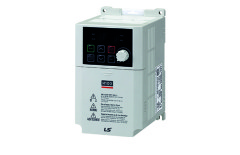
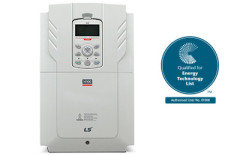
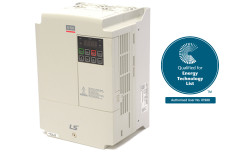
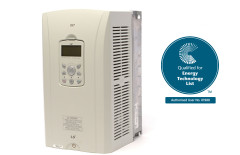
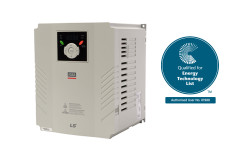
Contact Dalroad for further information on the LS Variable Speed Drives on [email protected] or call 01585 505 252.
